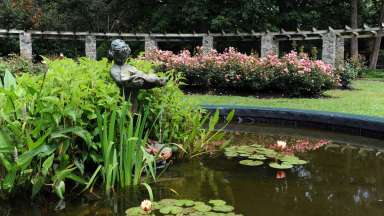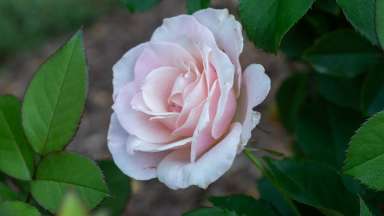Jump To:
The Raleigh Rose Garden is historic garden featuring 1,200 roses of 60 different varieties blooming from late May until autumn. The Rose Garden is also home to Raleigh Little Theatre (RLT), a non-profit community theater that produces performances year-round in two indoor theaters and the outdoor amphitheater set in the Garden.
The garden is open to the public daily from dawn to dusk. It is one of only three accredited rose gardens in North Carolina, featuring sixty rose beds with hybrid teas, floribundas, grandifloras, miniatures, and antique varieties. As a general guide, the roses typically bloom from Mother’s Day through the first hard freeze, usually around mid-November.


